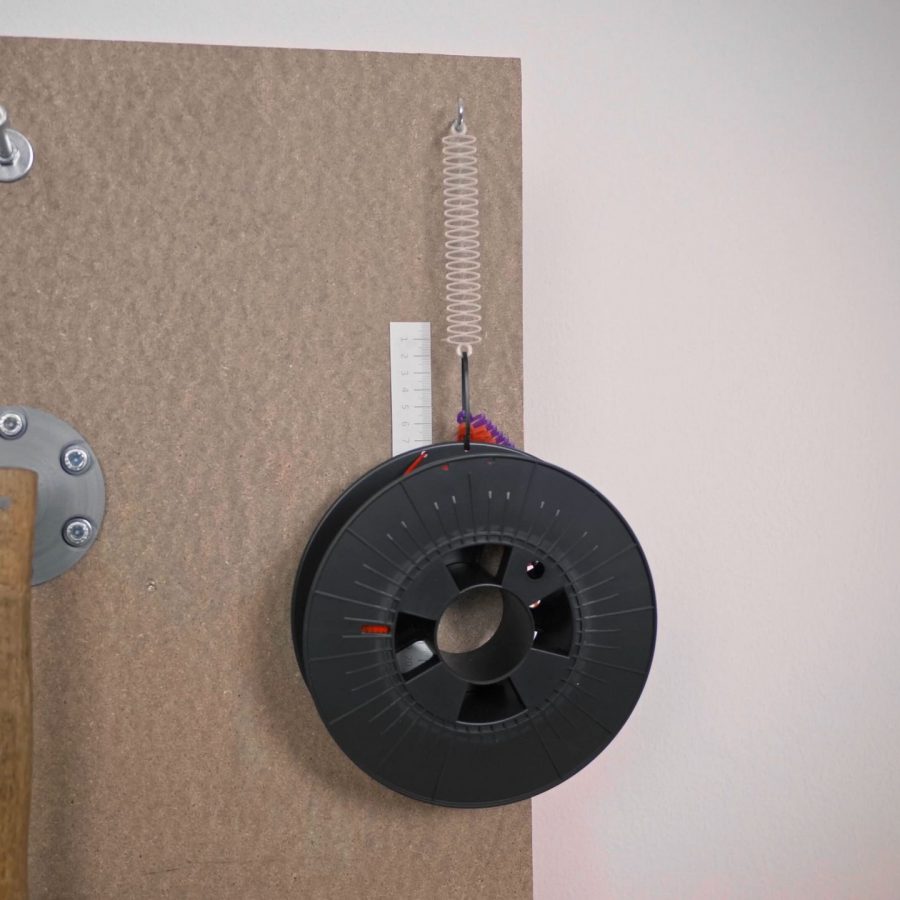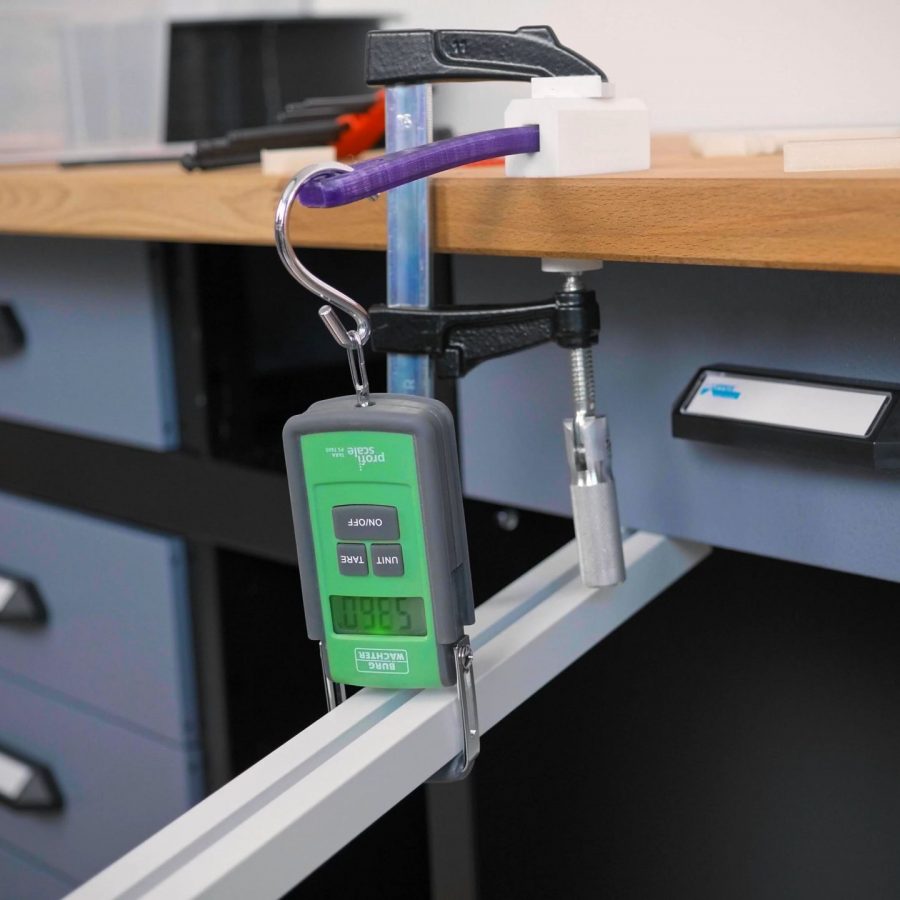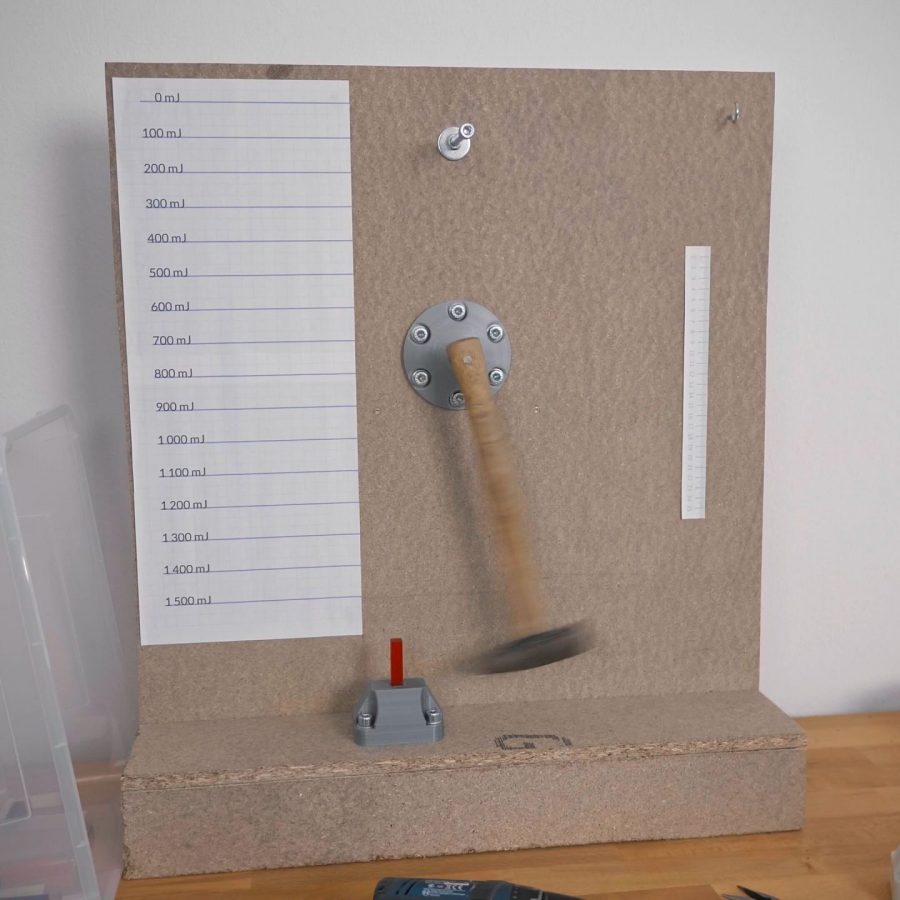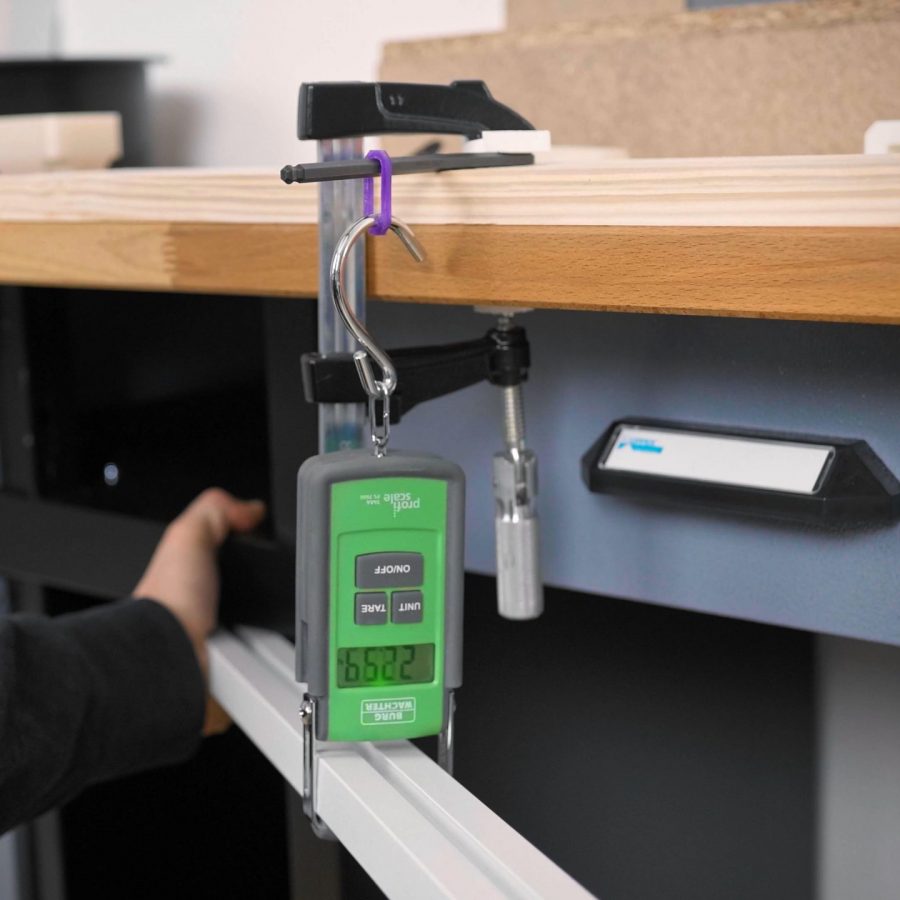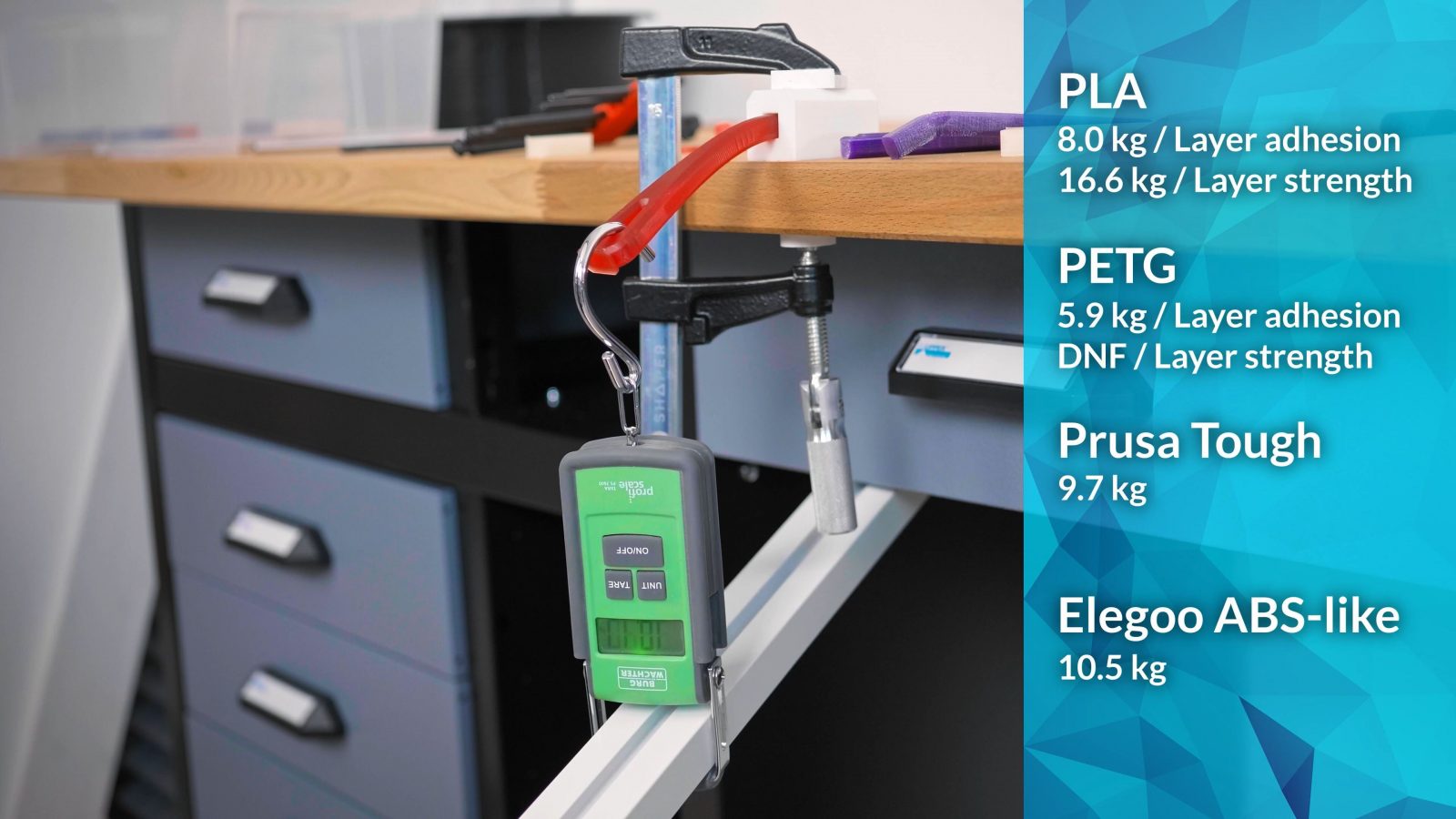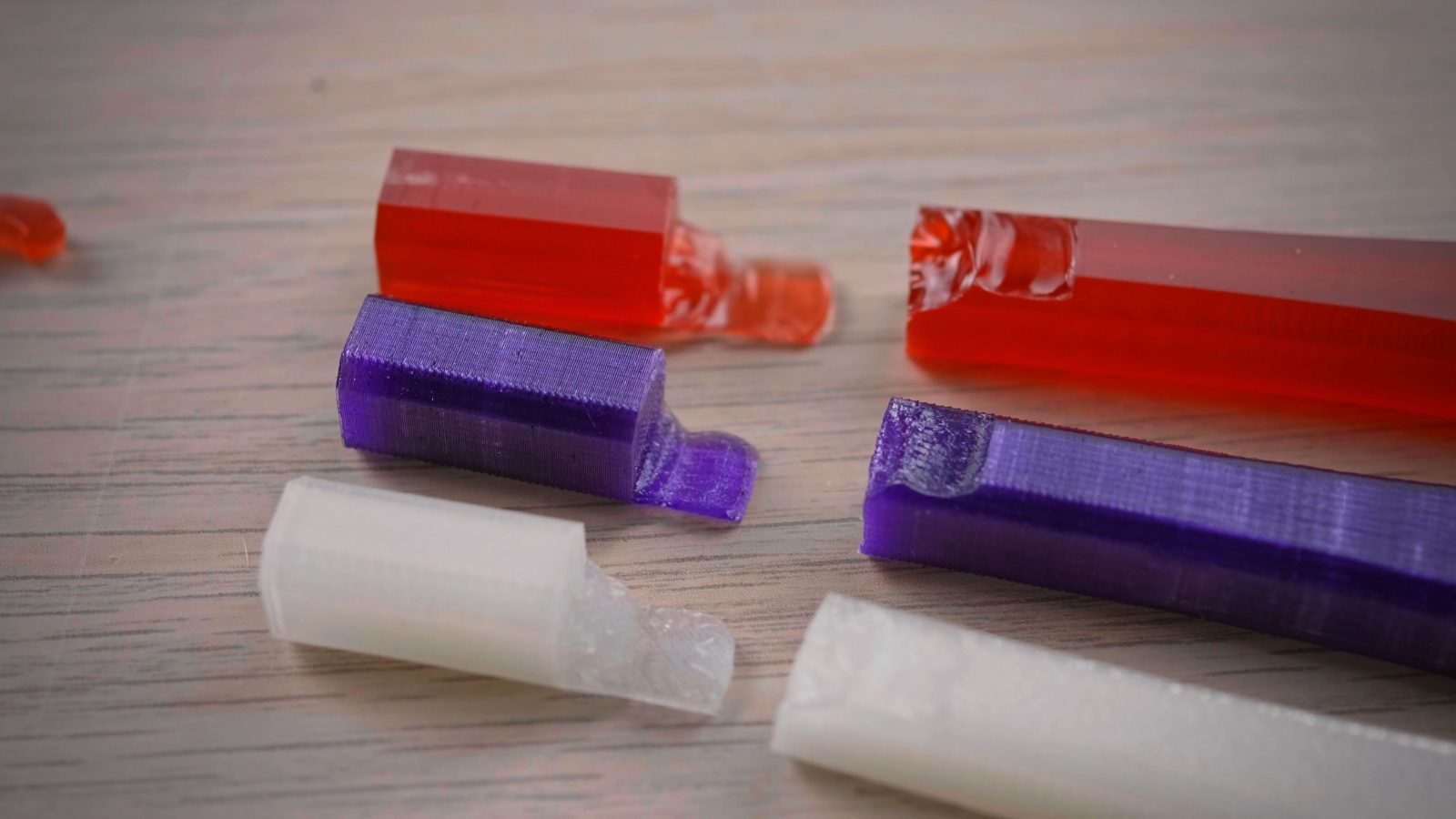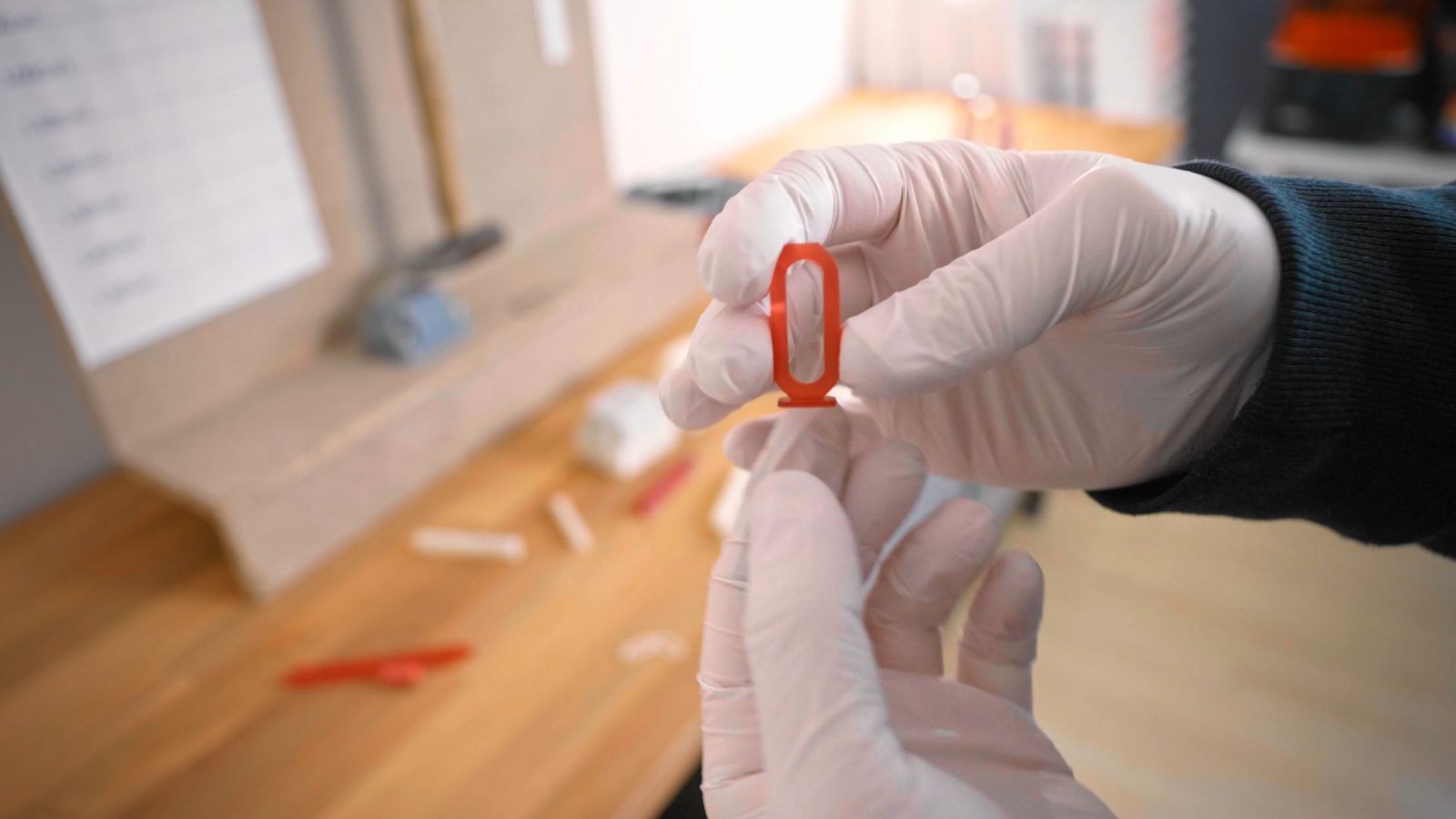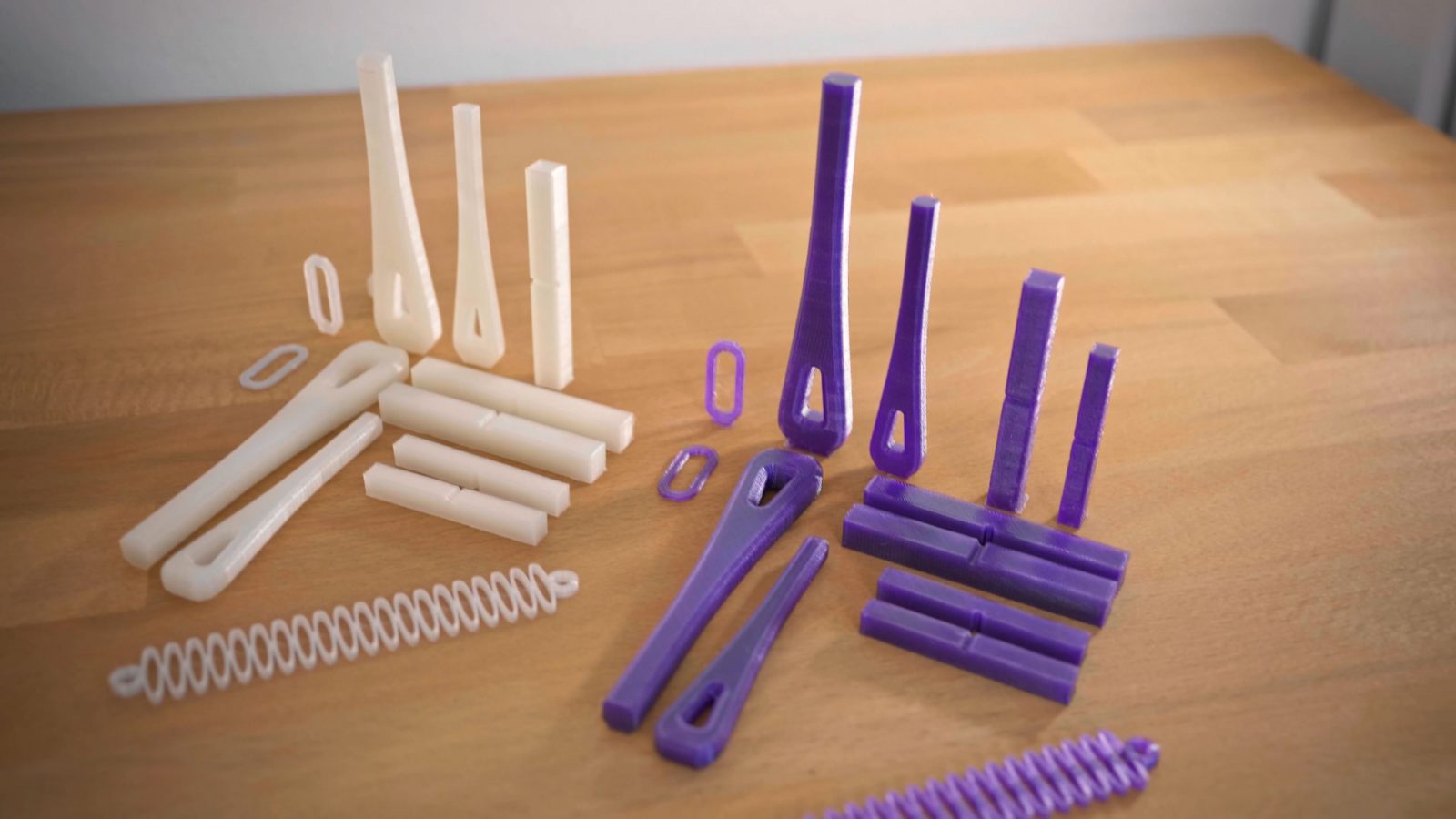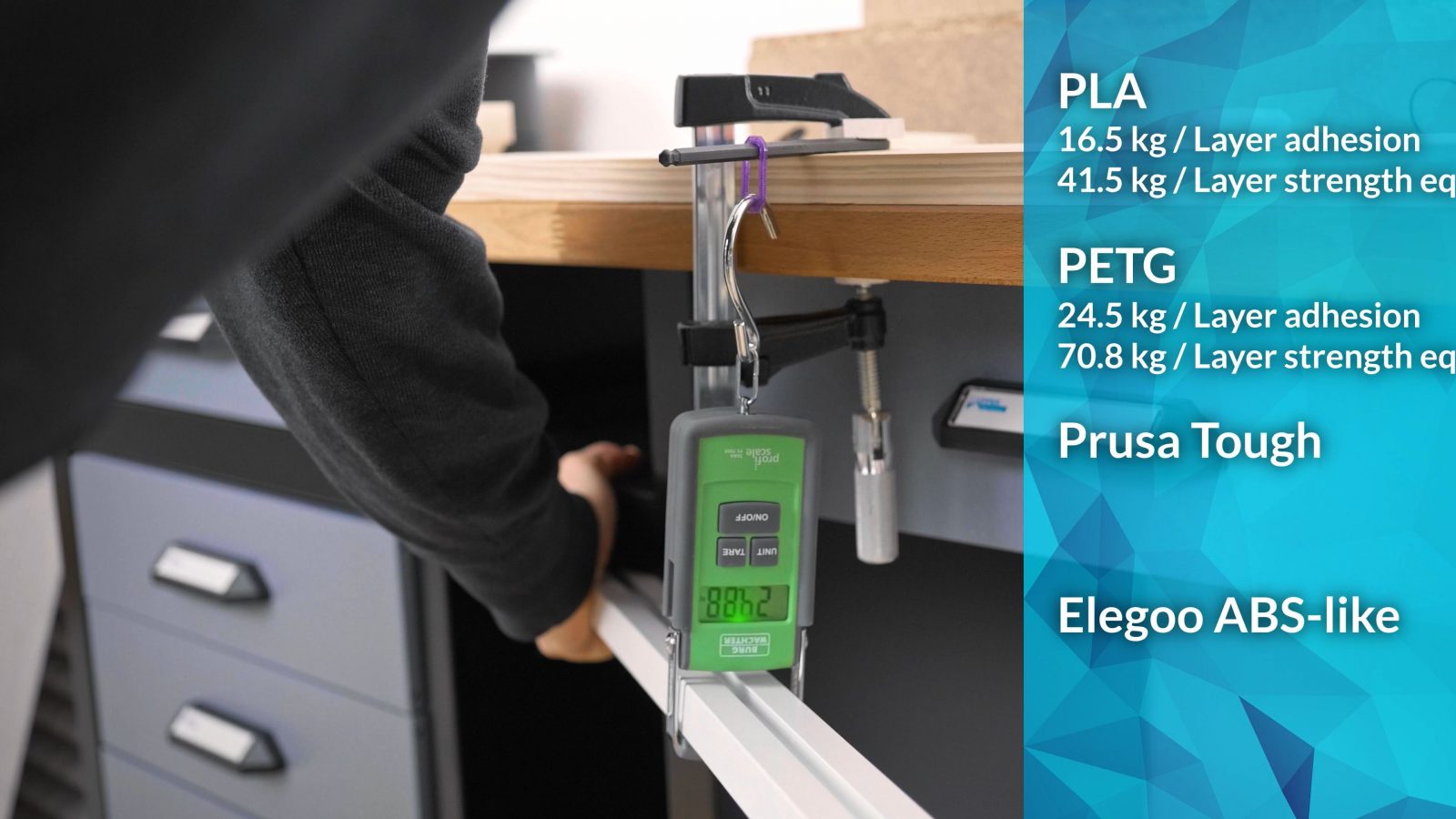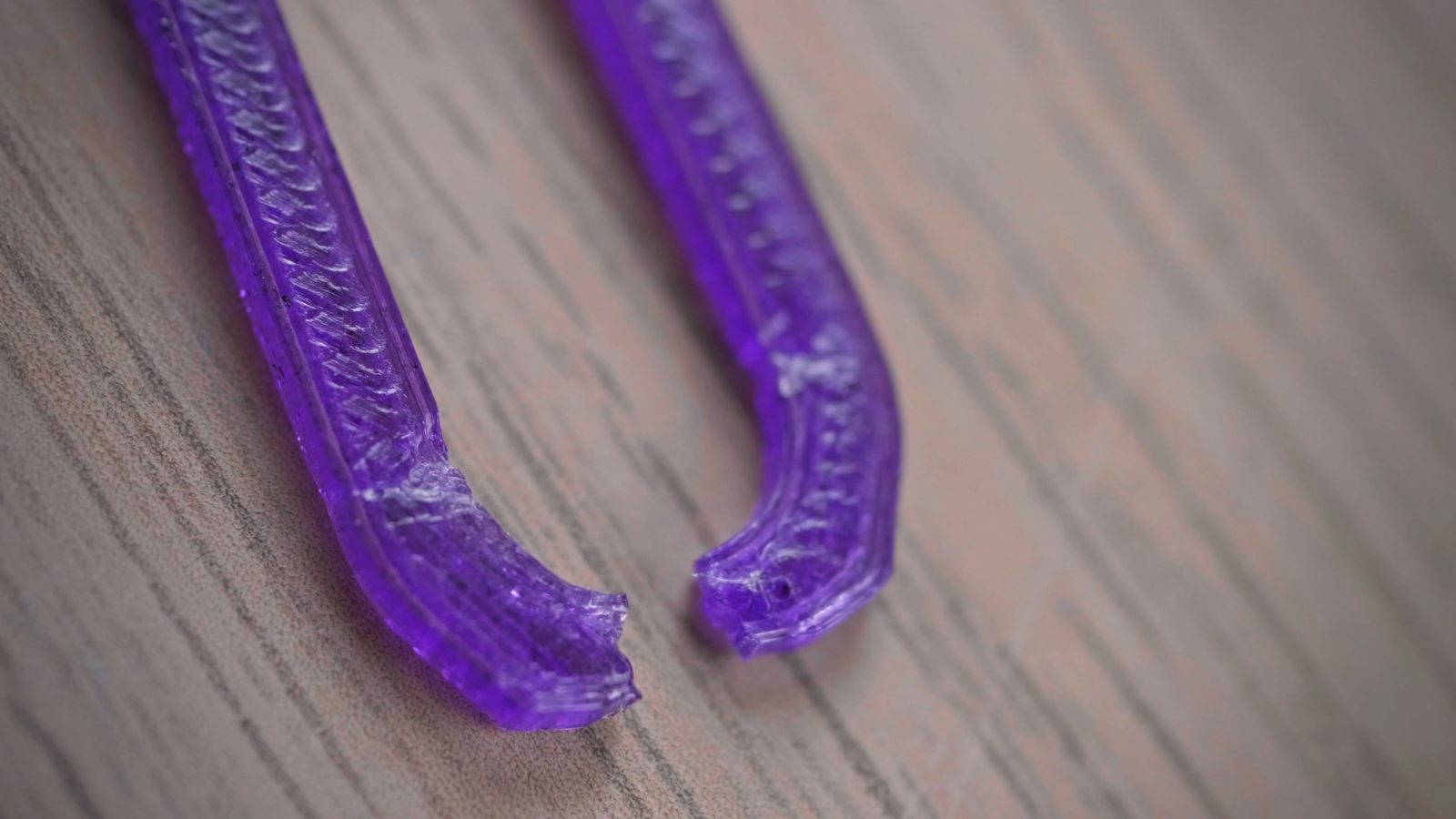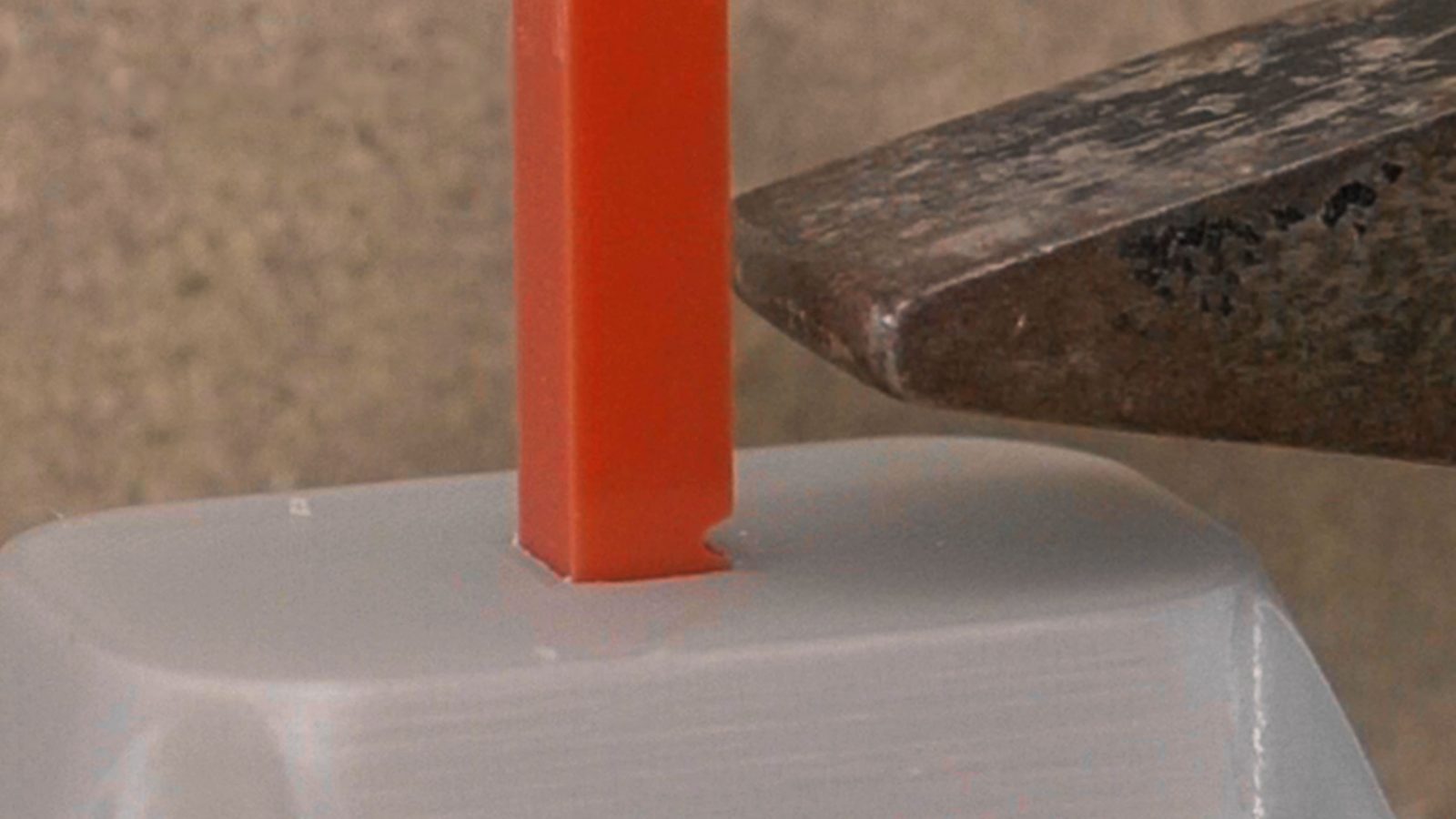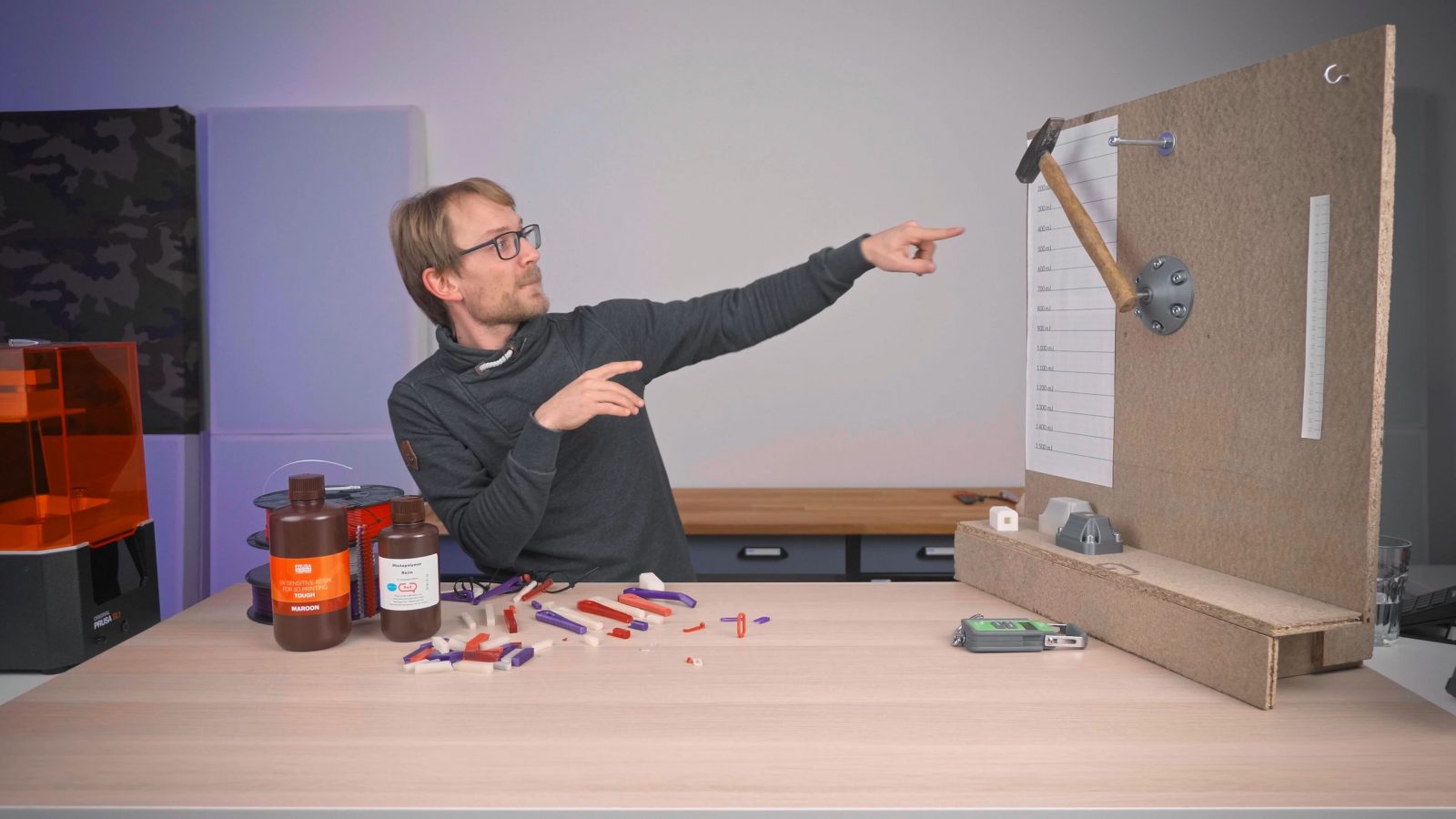Resin printers! These things have been getting incredibly cheap and really good lately. They’re not quite as convenient or safe to use as filament printers, and the other thing that usually comes up is “isn’t the resin super brittle and weak?”
So that’s what we’re going to find out today. You’ve probably seen my “Filaween” testing series where I’ve put a few dozen different filaments through their paces and I’ve used the same tests for the Elegoo ABS-like clear red resin and the Prusa maroon “Tough” resin. And to have a reference to compare against, we’ve also got DAS Filament PLA and PETG in the mix, which were consistent performers in the Filaween series. I’ve already done the test on the filament and resin prints, as you can see by the pile of broken test prints in front of me, and, well, there are quite a few surprises in here.
So, how did I test these? First, I usually printed the test parts for Filaween with “normal” print settings, meaning they were printed with shells and infill at the layer heights you’d typically use. The key difference with resin prints now is that they don’t really have that concept of “infill”, at least for most slicers, so I printed them completely solid. To keep it fair, I also printed the PLA and PETG parts with 100% infill. And with all these materials, I did absolutely zero tuning – I used the stock profile for the SL1 that comes with Prusa Slicer for their tough resin and then used the exact same print files for Elegoo’s clear resin as well. For the PLA and PETG, I used the “Prusa PLA” and “Prusa PETG” settings with their defaults on a MK3. Usually, for the Filaween tests, I’d tune temperatures and flow rates, but since I’m not doing any tuning for the SLA prints, I wanted to keep it fair and stick with untuned profiles for the filaments as well.
We’ll be doing four tests on each material, a rigidity test, a bend strength test, an impact test and a pull test.
Some of these tests are inspired by the actual engineering standards, but since I don’t have the means to do any of them 100% to spec, I’m instead focusing on getting meaningful test results in custom setups to give you a realistic idea of how well these materials will perform in real-world applications.
So let’s get started with the first one, the bend test. For this one, I’ve got these testing sticks that come down to a 10x10mm cross section with some beveled edges. It goes into a rigid holder on one side and on the other end, exactly 100mm out, it’s got this loop that I can hook my trusty luggage scale into, and that’s going to show me how much force I’m applying to our specimen when it snaps. Let’s start with the PLA and the PETG. Since filament prints have actual layers, I’ve got two parts each, one printed standing up, so that we’re testing layer adhesion, the other printed laying flat to test material strength. For layer adhesion, the PLA holds just under 8kg, the PETG 5.9kg. Testing the material strength it self with the part printed flat, we saw 16.6kg for PLA and a “did not fail” for PETG.
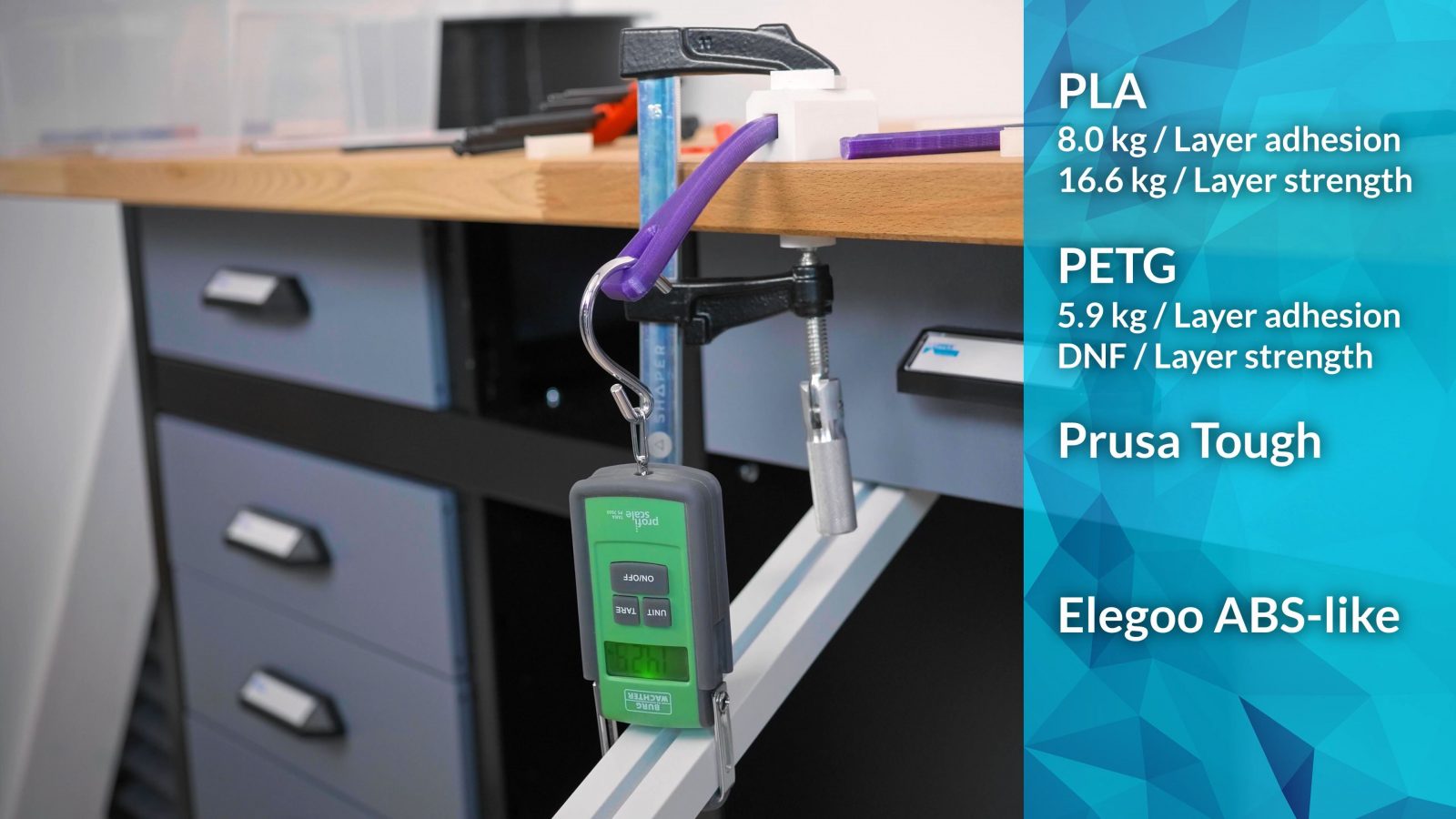
Because PETG is a bit softer than PLA and, when you keep it dry, is actually very tough and not brittle at all, it simply stretches a bit and moves on with its day. I think that’s a fantastic property to have in 3D prints that need to be tough.
For the resins, I’ve only got a single test piece for each one, because we don’t have to worry about layer adhesion in resin prints as it’s all one consistent piece of material. The Prusa Tough resin breaks at 9.7kg, the Elegoo at 10.5, so both resins are stronger here than the filament prints when tested for layer adhesion, but weaker with the filament prints aligned with the direction of the layers.
What’s interesting here is that these parts actually all failed in the exact same way, at least for the ones printed flat. They’ve got a straight break and then this, I don’t know, peeled off or sheared off parts at the bottom. I’m just going to say that that speaks for the consistency of the setu p, but it’s probably just a result of how the parts are held at a slight upward angle to keep them from slipping out.
Next, let’s check out how rigid these materials are. A softer material will usually perform better in the strength tests and in the real world because it distribute loads over a wider cross section by slightly stretching and conforming without breaking. For example glass should actually be very strong material, but because it can’t conform to loads, it still ends up breaking super easily. Yes, I know, that’s a simplification.
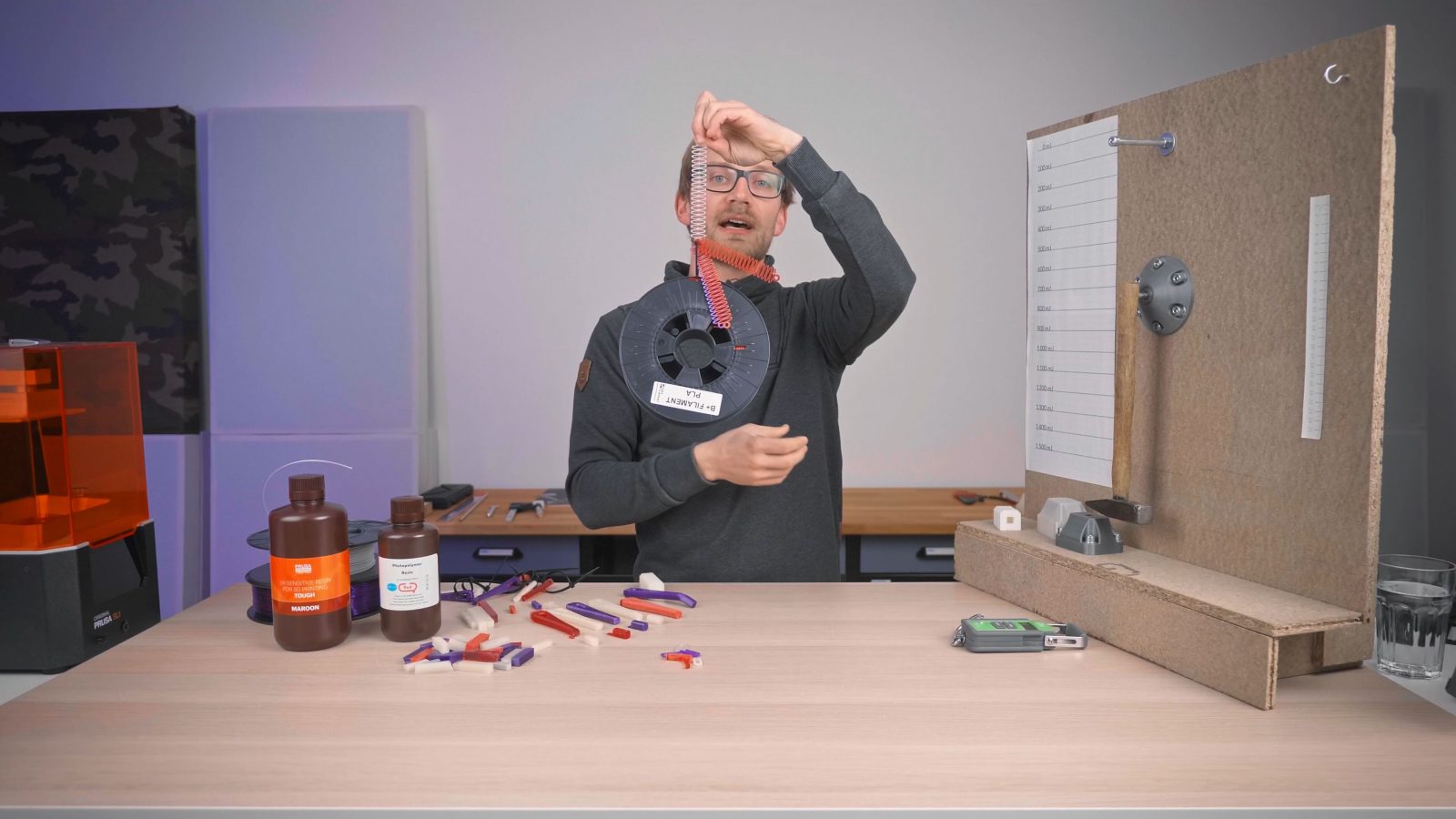
So for the test I printed these springs for each material and I’m hanging a roughly 1kg spool of filament from them to see how far they stretch.
This spring is not linear, but I designed it so that I could get results for anything from a carbon fiber filled PETG to a super elastic TPU with the same part.
So, for PLA we get a stretch of 14mm, for PETG it’s 18mm, Elegoo resin end up at 19 and the Prusa Tough at 26.
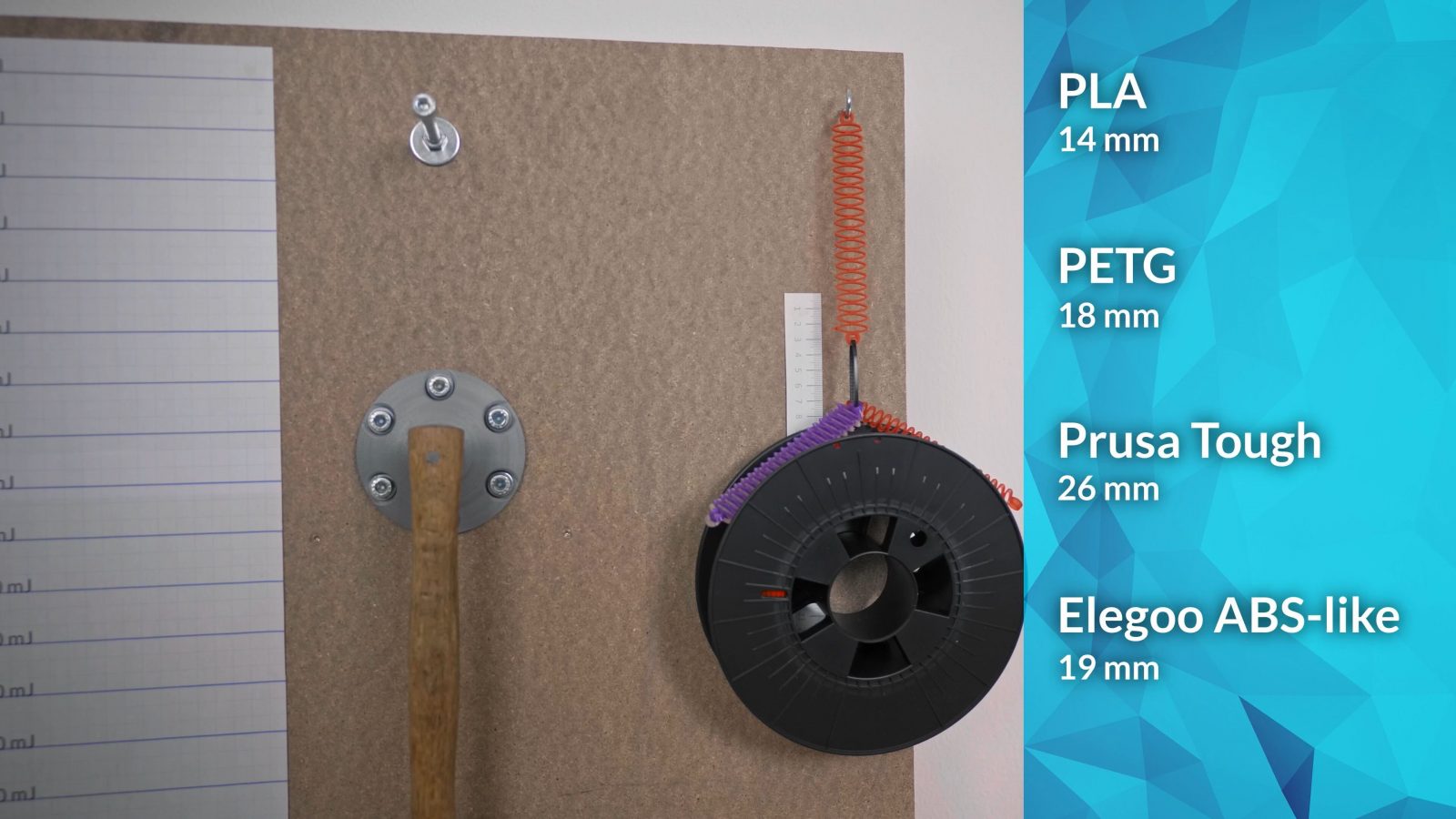
I think I have an explanation for this, but we’ll get to that in the end, for now, let’s just keep in mind that PLA is the most rigid material out of these, Elegoo resin and PETG are basically identical and Prusa resin is much softer.
Next, what I call the “Pull Test”. These are elongated rings, once printed upright, and once laying down flat, and the flat ones are actually only half as thick because otherwise, well, I wouldn’t be able to break them. I figured that out the hard way.
Let’s get started with PLA again, the first, thicker layer adhesion test broke at 16 1/2 kg, the thinner layer strength test at 20.75kg – which, if it were the same thickness, would be 41.5kg. That’s pretty good for such a small piece of material. But it’s easily bested by PETG, which achieves 24 ½ kg printed standing up and an impressive equivalent of 70.8kg when printed flat. We can again see that the PETG prints stretch and deform a lot before breaking, which gives them much of their strength.
Moving on to the resins, again there’s only one test part again, as it would be really hard to remove a flat test piece like this from an SLA bed, but also, again, it’s not necessary to test different orientations as the resin should be an almost perfectly isotropic material. As I tested the sample with Prusa Tough resin, I was pretty surprised to see it almost immediately rip at the bottom of the loop – even though the brim that I had left on the resin prints should help with that specifically. It only achieved 6.7kg before it failed. The Elegoo resin is much better here, managing 38kg, which again, is much better than the layer adhesion tests for the filament prints, but a bit weaker than both PLA and PETG when I tested those along their layers.
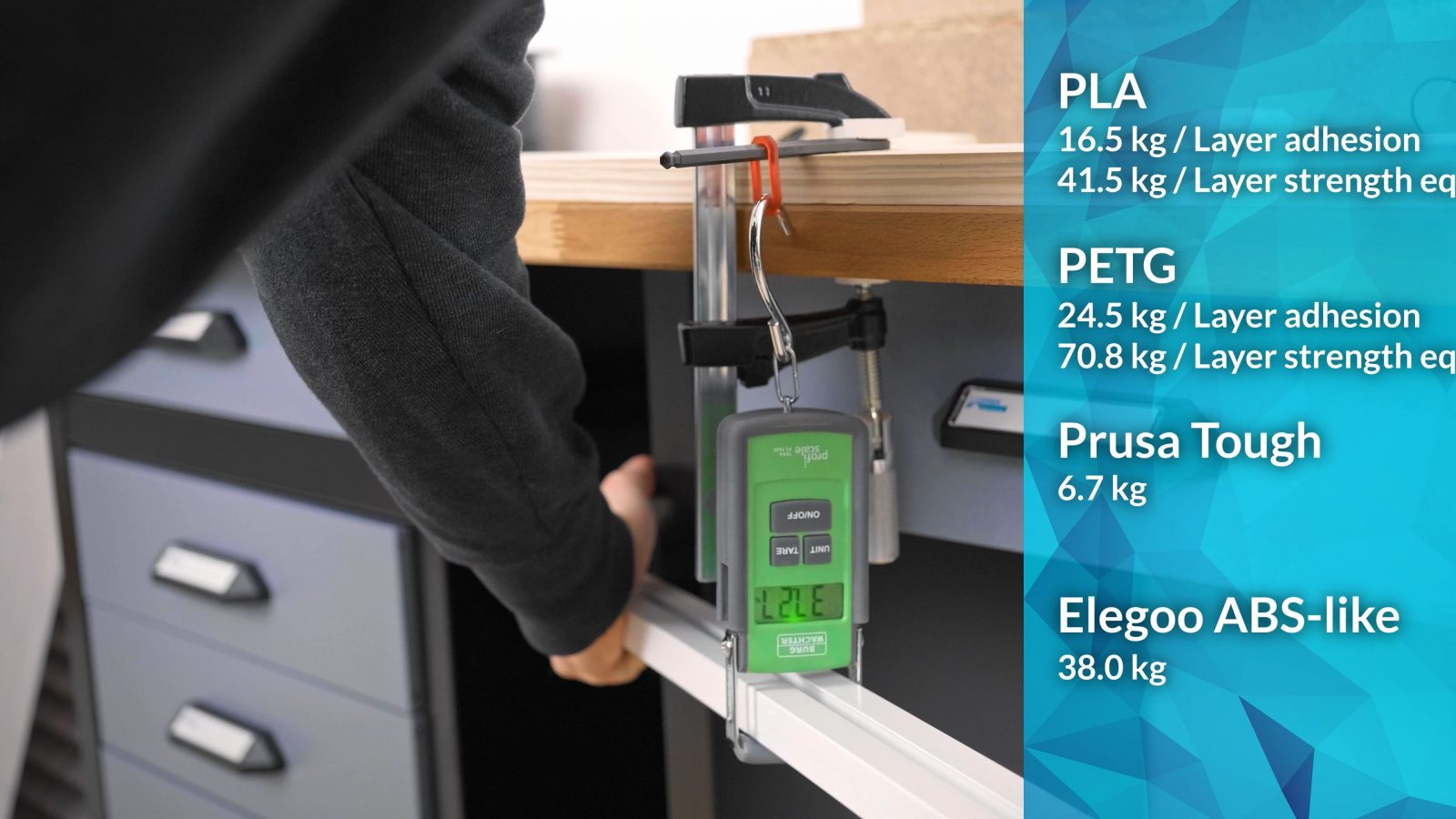
Alright, stop. Hammer time! This last test is, I think, the most fun one, we get stuff flying around everywhere, every single sample will break in here, and I get to swing a hammer! This is actually the test that is the closest to the proper way of doing it, and if you want to look up the exact specs, it’s the IZOD impact strength test. We use a sample that’s again 10x10mm, but it has a notch in the center that makes it break in that exact spot. Then, we hit it with a swinging weight and measure how far it swings back up after it has destroyed the specimen.
You can see the scale right here, if it swings up all the way again, our sample has absorbed no energy from the hammer at all while breaking, if it gets stopped, it has absorbed everything. So depending on how far it swings back up, we can measure how “tough” a material is, and that’s going to impact how well it handles blows and impacts.
Three tests for the filament prints, again one testing layer adhesion, then one testing with the notch printed up top, so we get interrupted layers, and one printed with the notch on the side to get continuous layers. With resin, again, just a single test orientation.
Now, one thing I noticed is that the resin prints actually came out oversized by about 1%, while the filament prints were either spot-on or slightly undersized, which meant the filament prints fit perfectly into the holder, while the resin prints ended up getting stuck pretty hard. But it was just a quick fix to make that work.
Now, results, starting with PLA again. Predictably, the sample printed to test layer adhesion was the weakest at just 90mJ absorbed, then the flat sample with interrupted layers at 350mJ and the “sideways” part with a continuous shell at 390mJ. PETG performed slightly better at 110, 350 and 480mJ. Prusa Tough resin again was surprisingly weak at just 280mJ, but Elegoo resin ended up at 650mJ.
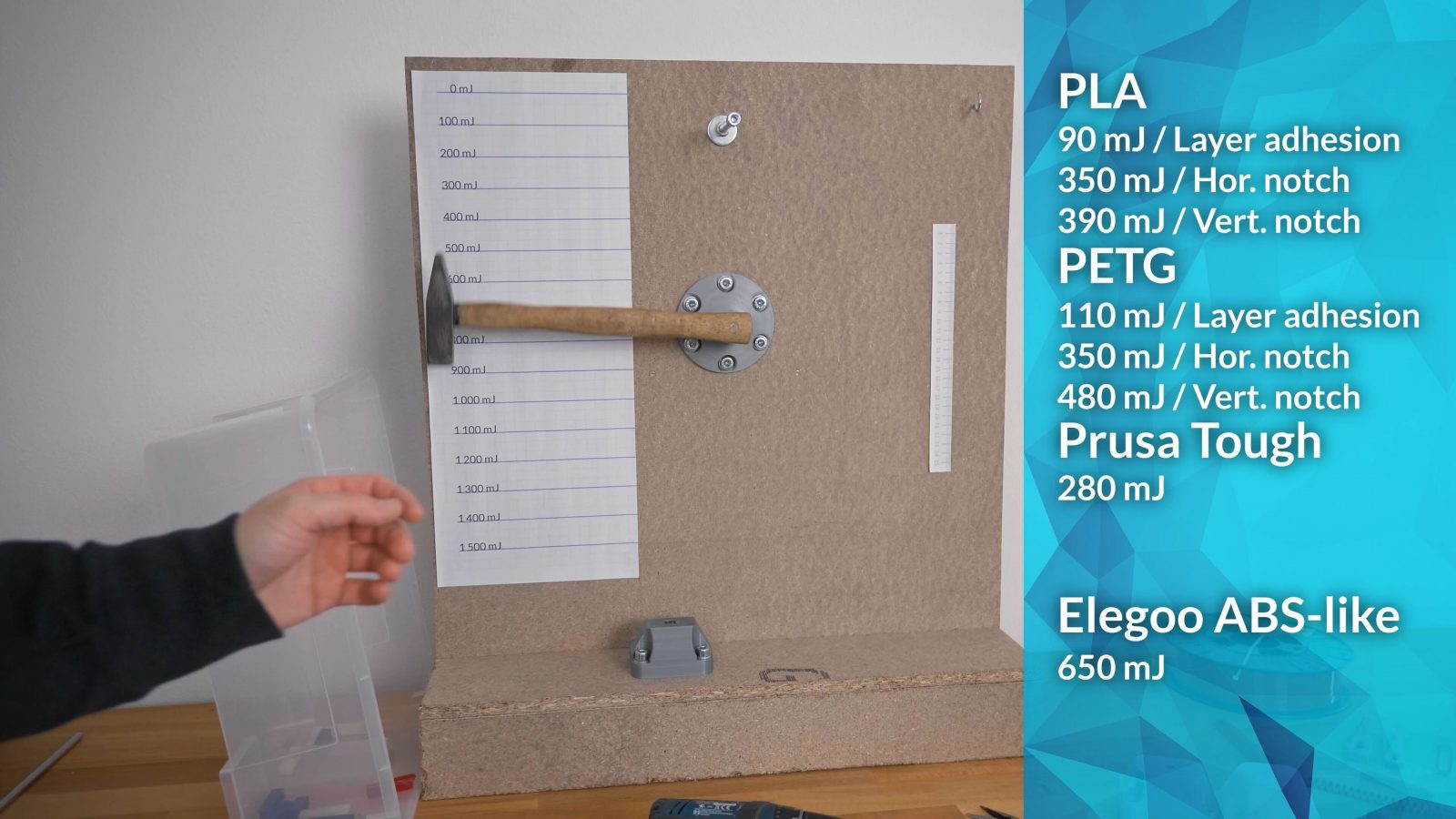
Because of the way the Filaween scoring weighs these results by how significant they are in the overall performance of the material, that gives the Prusa resin a total impact rating comparable to PLA, mostly because there’s no layer adhesion weakness, while the Elegoo resin is about comparable to the better ABS grades, and ABS is specifically known for being a high-impact-strength material. That’s, again, a pretty good showing for the Elegoo resin!
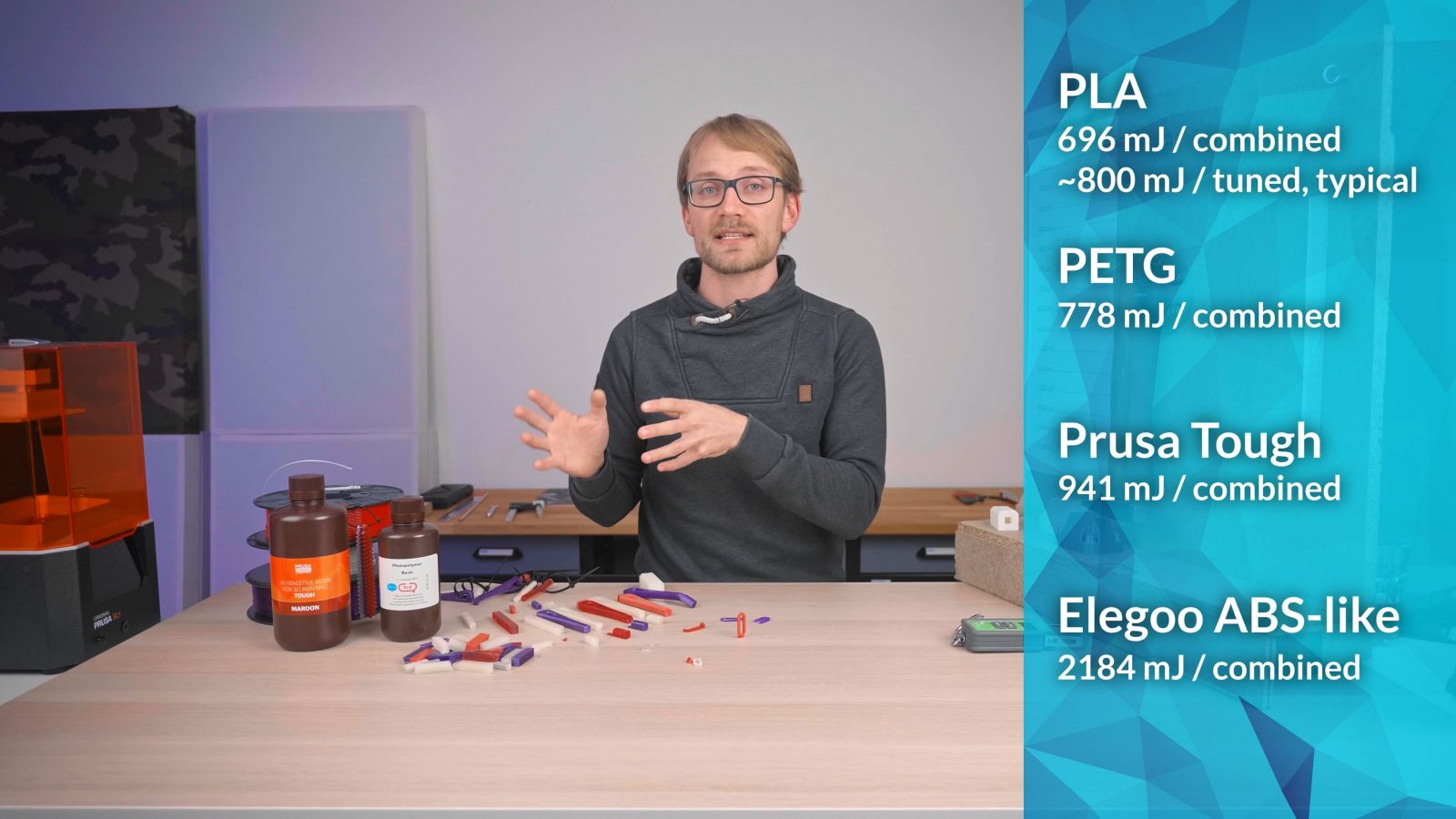
So if we look at the overall weighted strength rating that I usually calculate for filaments in the Filaween tests, again, those combine the measurements into a total score in a way that I think makes sense, and, yes I have adjusted the scores for being 100% infill parts, for the Prusa resin we get a score on the lower end of what PLA typically manages, more in the neighborhood of some of the biomaterial-filled filaments like Extrudr BDP or some of the Algix filaments. It’s still probably strong enough for most things you’d want to do, but after seeing the numbers, it wouldn’t be my first choice for parts that need to be structural. The Elegoo resin clearly outperforms the Prusa resin here and is on par with the DAS Filament PETG I tested. Its score is on the higer end of what PLA typically does and starts inching into what I’d call “high performance” materials if it were a filament.
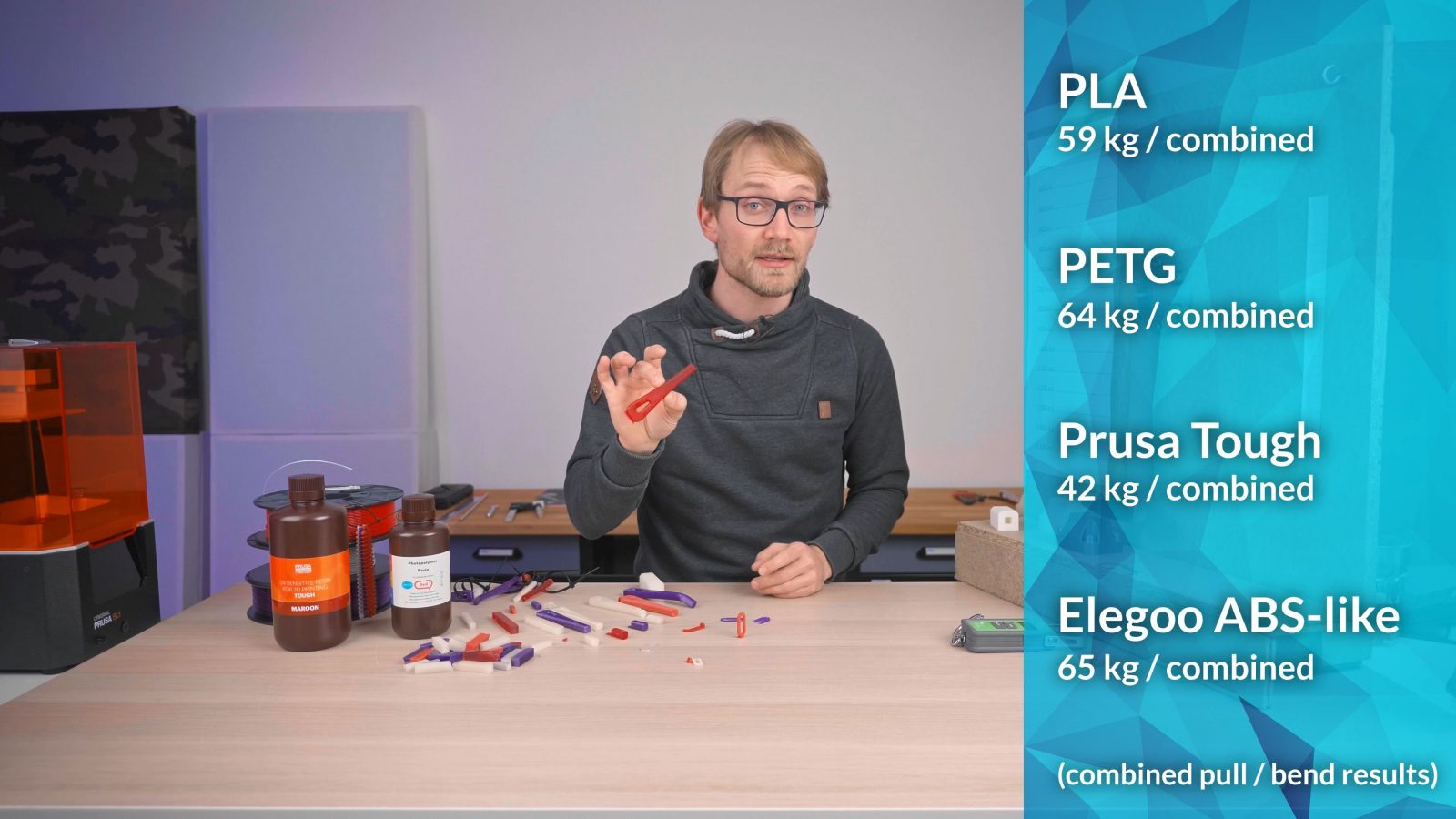
Just to give you a reference for how the different filament types typically score, on the low end, under 40, you have a bunch of “weird” filaments, then 40 to 80 is PLAs on the mid and low end and PETGs on the higher end of that, and then above that, we get stuff like Taulman’s PCTPE, which is as close to “indestructible” as I’ve seen.
I had also reprinted all these parts at 75% scale, thinking I wouldn’t be able to break some of these when they were printed at 100% infill, but that wasn’t the case. Still, I retested everything with the smaller prints, but got the exact same results. So that’s good.
Two notes on the resins used. I cured them in the Prusa CW1, because that gives very consistent results since it’s basically running through a programmable curing cycle. I had it on “Drying + curing”, which heats up the parts first to evaporate the IPA from washing, then warm-cures them. Now, the Elegoo resin stayed, like, rubbery even after curing, but I’m sure that it was properly cured. I tried on another part and it didn’t feel any better to the touch after a second round of curing.
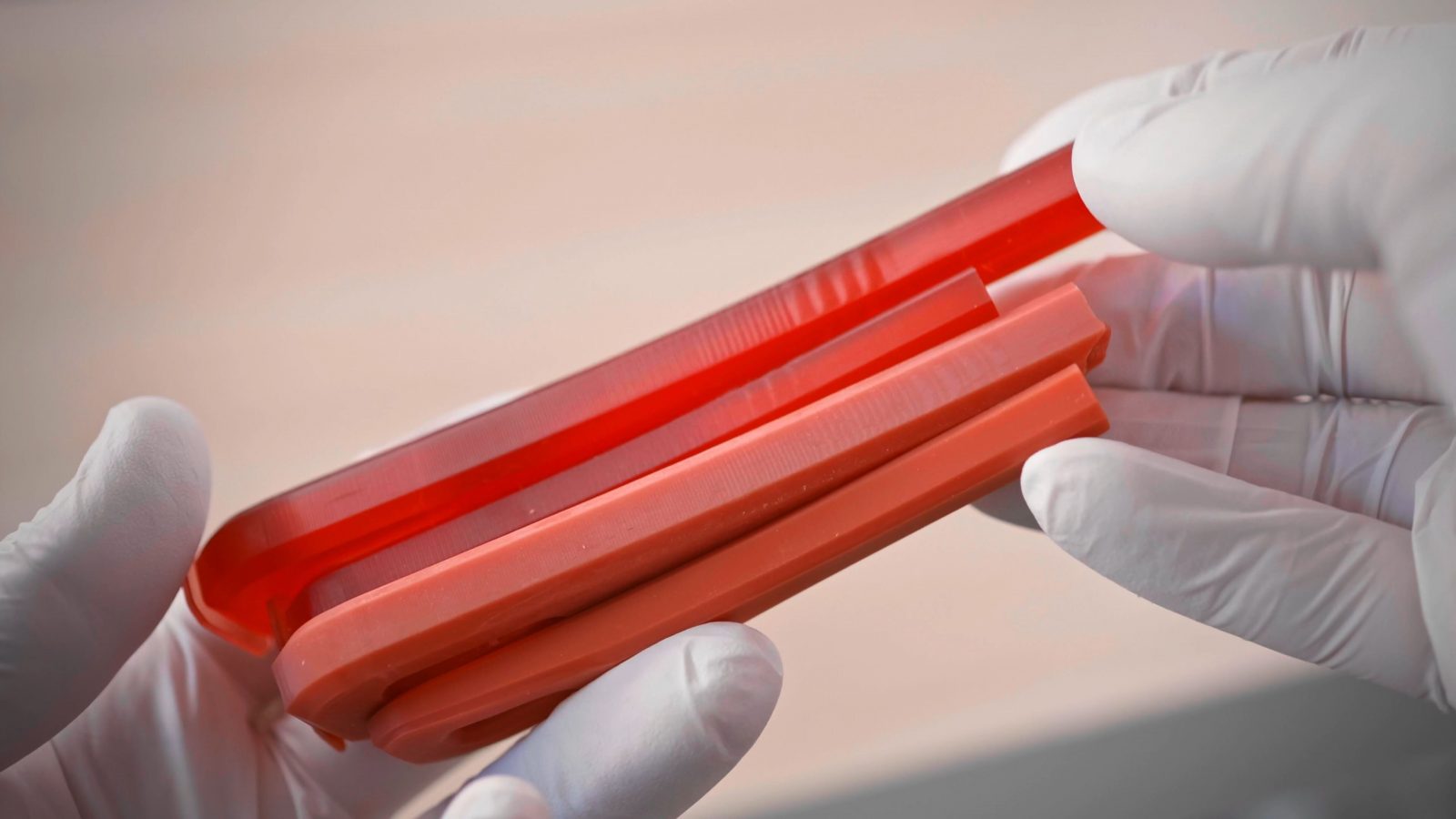
The Elegoo resin is a clear resin with a red tint, while the Prusa resin is complete opaque.
Perhaps, and this is just pure speculation, because it’s an opaque resin, it doesn’t cure as deeply and even though it feels dry and cured on the surface, it might still be undercured on the inside, simply because the UV light can’t reach that deep inside the part, which would explain the overall weaker performance, as well as the fact that the Prusa Tough resin ended up much softer than the other material. But that requires more testing for sure.
Also, when we look at our Filament, this wasn’t the highest-spec filament possible. The PLA is what DAS FILAMENT call “B+”, so filament that other manufacturers would just throw out because it either isn’t a full spool, or in most cases, is the transition between two colors. It should still have the same material properties and consistency as normal filament, and usually it does, but there’s no guarantee for that. I used that because it probably represents an “average”, run-of-the-mill filament a bit better. And the PETG, also DAS FILAMENT, is a type that has never made it to market. DAS FILAMENT and me tried to make another custom color, like the Tom’s 3D Infinity Blue, and this is a prototype of “Slag Violet”, which is a really cool purple or violet PETG with black particles in it, and it looks awesome, especially when you put some light behind it, but the particles made it nearly impossible to manufacture consistently because they tended to stick out the side of the filament as little bumps and that’s not too great for production. Still, the few spools I have should have the same specs as regular filament.
But in either case, you could get much stronger prints, especially when it comes to layer adhesion, by cranking up print temperature and flow rate. For the actual filaween tests I always calibrated for that, but in this case, again, I wanted this to be as real-world as possible. Let’s be honest, how many folks out there actually calibrate every single filament they use?
So that’s the testing resin vs. filament for now. To recap, many of the resins we have today, even the cheap ones, actually outperform filaments, even if it’s just for the fact that there are no layer adhesion issues. But there seems to be a pretty wide range of how exactly a resin can perform, based on the resin itself and probably also on how you print and post-process it. In either case, I don’t think it’s fair to just assume that all resins are brittle and weak, because as we’ve seen, they can be very strong competitors.
So to finish this off, you can find links to this stuff below, however, none to Amazon.com because they just kicked me out of their affiliate program. Isn’t that great. You know, maybe it’s time to give Matterhackers a shot, they’ve got a bunch of resins for this sort of stuff as well. Links below.
Also an extra special shoutout to all my Patrons and YouTube members, without your support the Amazon thing would hurt even more. One particular shoutout I missed a few times is Sean Berry, so thank you for your support, but, as a tip, if you’re supporting the channel on Patreon, make sure you actually pick a tier so that you get access to the monthly hangouts and are included in the shoutouts. But that’s it for today, thank you all for watching, especially you guys who just got subscribed, and I’ll see you in the next one.
Printed on Prusa SL1 / CW1 / MK3
💙 Enjoying the videos? Support my work on Patreon!
Product links are affiliate links – I may earn a commission on qualifying purchases (at no extra cost to you)

Check out my second channel “More Layers” on YouTube for livestreams

